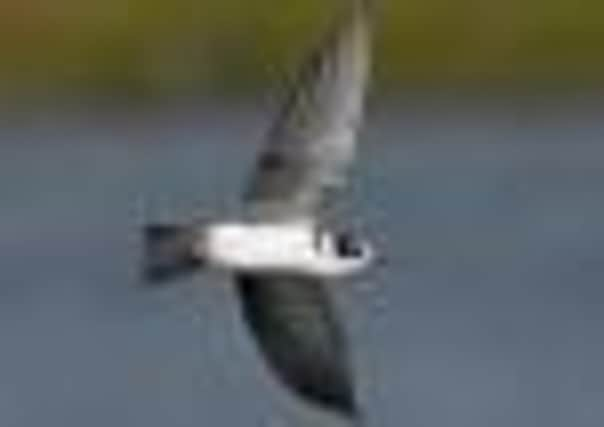Birdwatch: Black terns take to the water for flying visit


Sometimes they will linger – juveniles each spent nearly a fortnight on Hickson’s Pond at the RSPB’s Fairburn Ings reserve near Castleford and at the North Cave Wetland, East Yorkshire. They are small graceful birds and, with their dark plumage, rather like negative versions of the larger white sea terns.
Black terns, along with white-winged black terns and whiskered terns are collectively known as marsh terns.
Advertisement
Hide AdAdvertisement
Hide AdAll three typically breed on inland marshes placing their nests on floating vegetation instead of the islands, shingle beaches or sand dunes favoured by their seagoing relatives.
The black tern is the most commonly seen of the three and is more widespread although there have been huge declines in the western half of its range.
In the Netherlands the population has declined by 95 per cent since the start of the 20th century while there are fears that its main strongholds in Russia and Belarus could be at risk as agriculture in eastern Europe is modernised.
In this country they used to breed regularly until, along with spoonbills, cranes, black-tailed godwits and ruff they were pushed to extinction as wetlands were drained during the 18th century.
Advertisement
Hide AdAdvertisement
Hide AdBut, while some of the others, notably spoonbills and cranes, are staging a comeback it seems unlikely, given their decline on the near Continent, that black terns will join them in the near future.
The black tern is at its loveliest in breeding plumage in May and June when there is a dusty bloom to the black and grey colouration.
The birds we are seeing now are on the move south to the Atlantic Ocean off South Africa. From Russia and Belarus they move first to the Netherlands in August where as many as 180,000 gather at Lake Ijssel to undertake a partial moult of some of their primary feathers before continuing their journey.
A separate race of black terns is also found in the New World which breeds across Canada and the northern United States and which also undertakes a similar journey southwards.
Advertisement
Hide AdAdvertisement
Hide AdOne of these, a juvenile, has been caught up in the recent Atlantic storms and ended up this weekend at Covenham reservoir, north Lincolnshire, a first for the county and only the fourth British record. It has been showing well, catching insects over the reservoir and the surrounding fields.
Meanwhile a juvenile white-winged black tern was seen at the Old Moor reserve, South Yorkshire on Friday and follows recent sightings at Nosterfield Quarry, North Yorkshire and the Saltholme reserve on Teesside.
Another American vagrant, a buff-breasted sandpiper, was seen on Sunday in a sheep field just to the north of Thornwick Bay, Flamborough while two were at Saltfleet Haven on the north Lincolnshire coast this week and two pectoral sandpipers at Saltholme RSPB.
Other sightings at Flamborough included a corncrake in off the sea, and a yellow-browed warbler in a garden on the headland.
Advertisement
Hide AdAdvertisement
Hide AdAn adult Sabine’s gull was again a highlight of Sunday’s RSPB cruise from Bridlington.
There is good news from Spurn where the road to the Point has been repaired and reopened again while at Blacktoft Sands improvement work to paths on the reserve which has been going on all week causing disruption for visitors was due to be completed by today.
Inland a great white egret was seen over Otley Sailing Club.